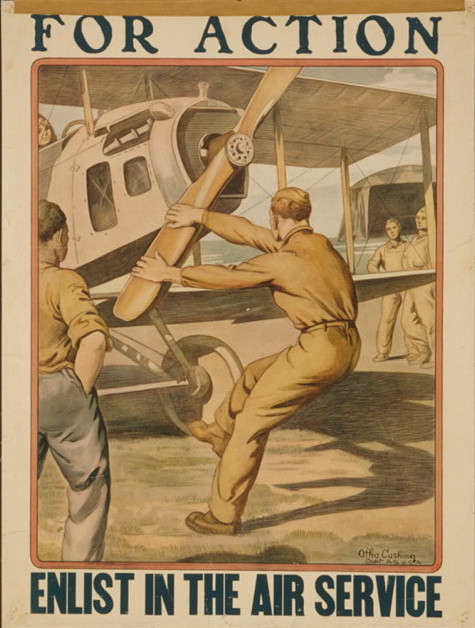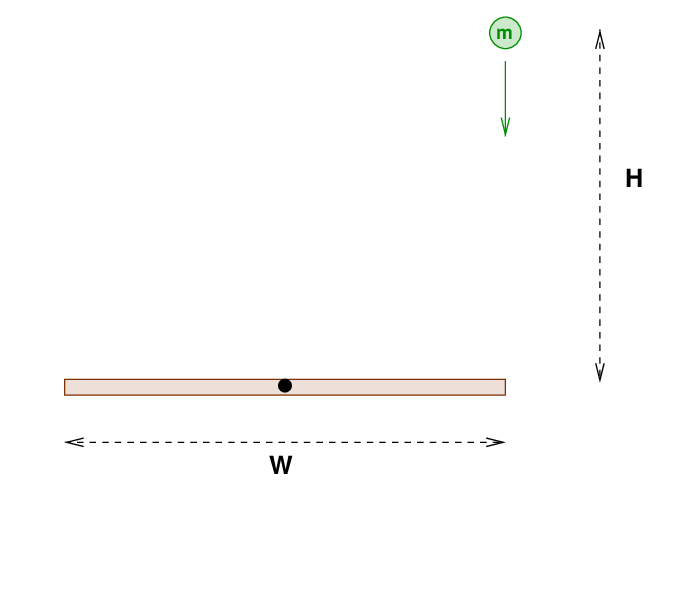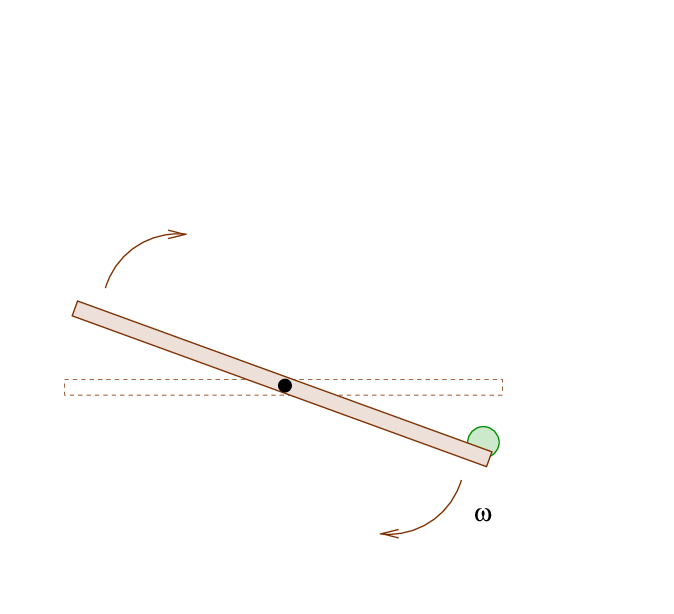
US Army Air Service recruiting poster painted by Otho Cushing, c. 1918-1920. Thanks to the Library of Congress
 Copyright © Michael Richmond.
This work is licensed under a Creative Commons License.
Copyright © Michael Richmond.
This work is licensed under a Creative Commons License.
During World War I, the ground crew had to turn the propellers of airplanes to start their engines. This could be a dangerous task.

US Army Air Service recruiting poster painted by Otho Cushing,
c. 1918-1920. Thanks to
the Library of Congress
Private Jones has an idea: he'll make a device which starts the engine without requiring a person to grab the propellor. The basic idea is to drop a sticky ball from a pole above the plane, so that it falls onto the very tip of the horizontal propeller.

The ball will stick briefly to the propeller, causing it to start rotating with some angular speed ω.

With just the right amount of stickiness, the ball will fall off once the propeller become vertical, and the plane can then take off.
How well will this idea work in practice? Let's find out. Jones makes some measurements and plans.

Q: Just before it collides with the propeller,
what is the ball's vertical speed?
Q: Just before it collides with the propeller,
what is the ball's kinetic energy?
Jones wants to know how fast the propeller will be spinning just after the collision.
Q: What method should Jones use to determine the
angular speed of the propeller after the collision?
Right: conservation of angular momentum.
Q: What is the angular momentum of the ball around the center
of the propeller just before the collision?
Q: What is the moment of inertia of the propeller-plus-ball
around the center of the propeller?
Q: What is the angular speed of the propeller-plus-ball
just after the collision?
"Hmmmm," ponders Private Jones. "That might work, but is it really the most efficient method we could use?"
Q: What is the kinetic energy of the system just before
the collision (yes, you already calculated this)?
Q: What is the kinetic energy of the system just after
the collision?
Q: How much of the kinetic energy was lost in the collision?
 Copyright © Michael Richmond.
This work is licensed under a Creative Commons License.
Copyright © Michael Richmond.
This work is licensed under a Creative Commons License.